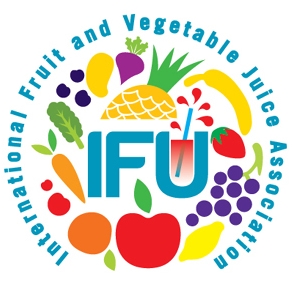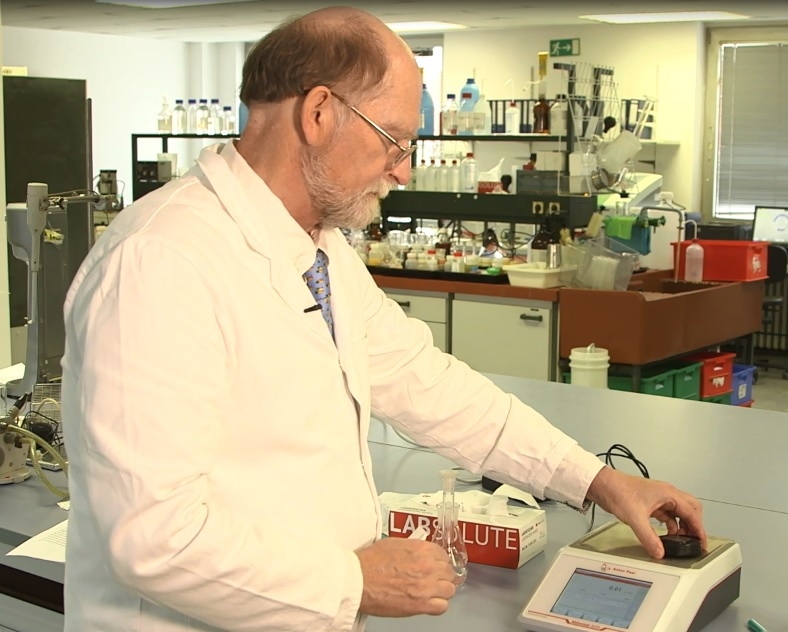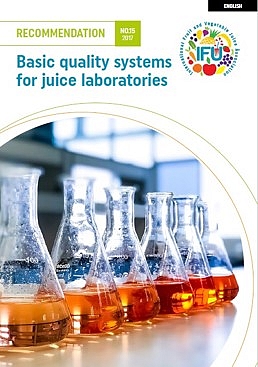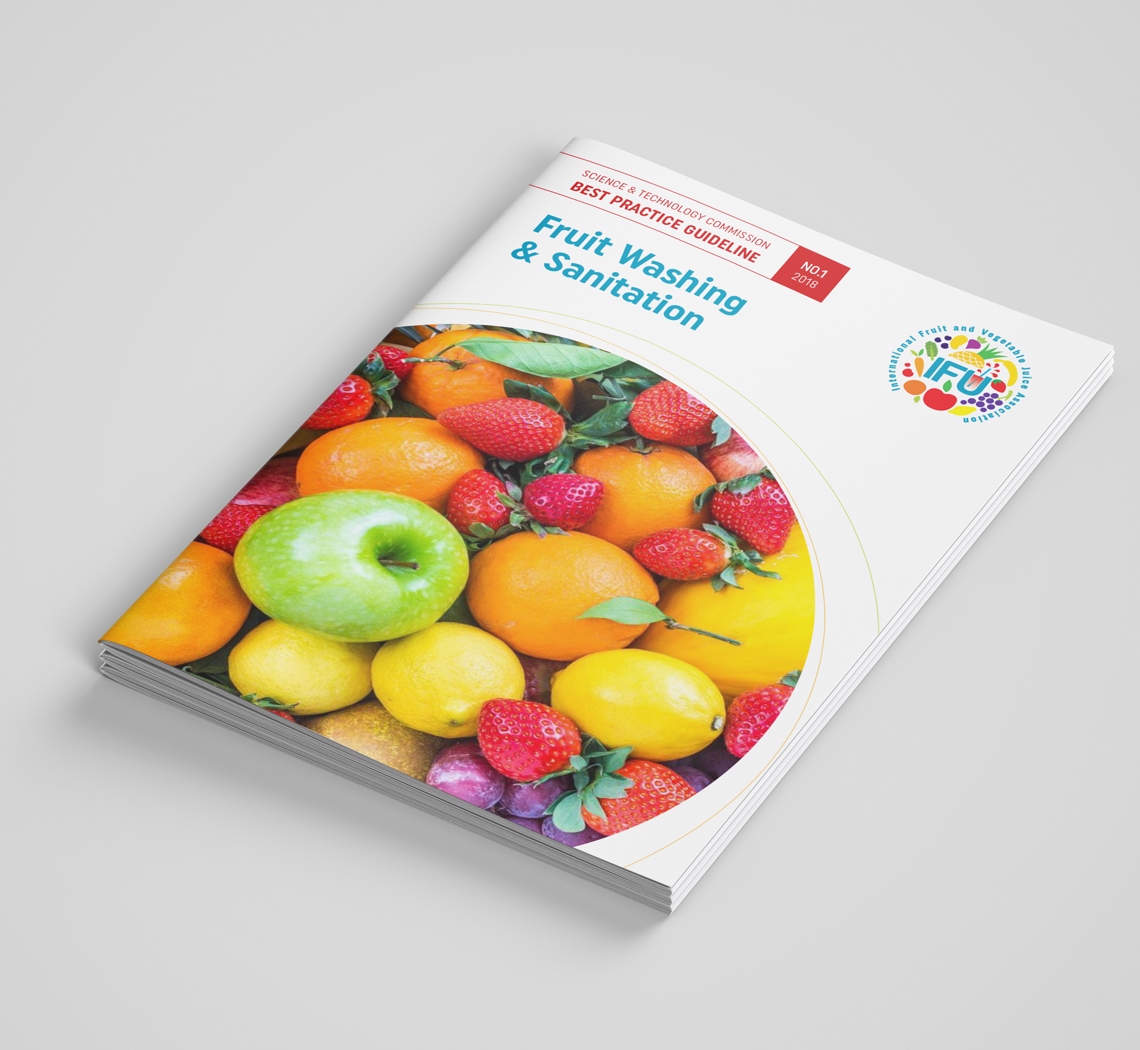The IFU (International Fruit and Vegetable Juice Association) has been since 1949 the only global member-based trade association dedicated to representing the world-wide juice industry at Codex Alimentarius and other international institutions. Using our unique scientific network, we have developed specific juice related methods of analysis, many of which are listed in the Codex International standard for juices and nectars and so are used around the world by bottlers, processors and laboratories for assessing the quality and authenticity of juice products and keeping up to date with new and revised methods of analysis. Other methods exist but IFU methods have been designed for use by the juice industry and have been tested with a juice matrix, which is not the case with others.
 Suppliers and customers will benefit in having clear understandings of specifications and testing methods, to avoid disagreements during a supply contract. This is an important area that I believe the IFU methods of analysis could be used for clarity between technical teams from both seller and buyer.
Suppliers and customers will benefit in having clear understandings of specifications and testing methods, to avoid disagreements during a supply contract. This is an important area that I believe the IFU methods of analysis could be used for clarity between technical teams from both seller and buyer.These catalogue of methods are maintained by a group of worldwide analytical and microbiological experts. They review the development of new texts, amendments to current methods and oversee the validation process prior to publication in accordance with the principles of ISO 5725 so the each method has a value for reproducibility (R) and repeatability (r).
For chemical methods there are 3 categories
• Simple – Used day to day for control purposes
• Complex – Requiring more advanced analytical techniques and typically used in contract or research laboratories
• Recommendations – Where validation has not provided suitable results but it is still useful to publish, or a review of a group of methods or guidance in relation to methods.
Recent changes to the methods
#3 Titratable acidity. Inclusion of a QA check for the standardisation of sodium hydroxide.
#7a Sulphur Dioxide. Interlaboratory variation has been reduced through standardisation of the heating stage. The method also lists the critical control points of the procedure.
#8 Refractometeric soluble solids. Now gives a broader range of acid correction and the conversion tables are revised. There is the inclusion of a weight per litre table.
#11 pH Clarification on the measurement of concentrates
#71 Analysis of anthocyanins. The revision has adopted a column with a smaller particle size that enhances peak resolution and is particularly useful for fruits with complex profiles such as blueberry and bilberry. There is a refence library of various fruit chromatograms with the major peaks assigned and labelled.
#81 Ergosterol. The measurement of ergosterol is a useful marker and may be used as an alternative to the Howard Mould Count as part of the quality assessment of tomato products.
#82 Nitrate. An alternative colourmetric method was developed as an alternative to ion chromatography. Nitrate is reduced to nitrite by nitrate reductase. Under acid conditions nitrite reacts with sulfanilamide and N-(1-Naphtyl)-ethylenediamine-dihydrochloride (NED) to form an azo dye which is measured photometrically at 540 nm.
IFU method #83 Colour measurement in blood orange juices. The method works on the principle that anthocyanins pigments are completely extracted from the juice with a specified volume of acidified methanol. After centrifugation the pigment content is determined by measuring the extract’s absorbance at 530 nm against a solvent blank.
IFU method #84 Stability tests for clarified juices.
The tests described in this method are either carried out during juice processing to assess the efficacy (efficiency) of the enzymatic and/or clarification steps or on the finished product to ensure that the appropriate treatments have been carried out correctly. They may also be carried out on blended materials to ensure that the mixture does not produce an unstable blend.
The main stability tests are:
1) Detection of pectin in fruit juices (“Ethanol test”)
2) Detection of starch in fruit juices (“Iodine test”)
3) “Hot/cold stability test” (test for phenolic/protein compounds)
4) “Acetone test”
5) “Bento-test” for assessing the dosages of bentonite and gelatin required to give a “good” fining
6) Determination of gelatin bentonite demand for proper fining (Proteins)
#85 The net volume determination of consumer packaged juices and related products. This is a routing procedure for bottlers, but essential for legal compliance and yield control. The method described is based on weight measurement converted to volume based on the revised weight per litre tables in method #8.
 There are also a series of e learning videos that will help put a method into practice and also assist in laboratory analyst training. These exist for #7a Determination of Sulphur Dioxide, #Relative density using a density meter, #8 Determination of soluble solids using a refractometer and #3 Determination of titratable acidity using an autotitrator.
There are also a series of e learning videos that will help put a method into practice and also assist in laboratory analyst training. These exist for #7a Determination of Sulphur Dioxide, #Relative density using a density meter, #8 Determination of soluble solids using a refractometer and #3 Determination of titratable acidity using an autotitrator.
Micro Method #12 Method on the detection and enumeration of spore-forming thermo-acidophilic spoilage bacteria (Alicyclobacillus sp.)
• The main changes, compared to IFU Method No. 12:2007, are the following.
• The tittle of the method has been changed.
• The optional usage of several media has been changed to the usage of one liquid (BAT broth) and one solid medium (BAT agar).
• A new pour plating technique is introduced for enumeration in 1 g.
• Performance testing for the quality assurance of the culture media.
• Performance characteristics for this method have been added
• Optional pre-incubation of packed ready-to-drink products
• Matrix-dependent special processes
Recent changes for Recommendations
R3: Use of isotopic procedures in the analysis of fruit juice
The recommendation on isotopic methods has recently been extensively updated as these procedures have moved on extensively since its original preparation in the 90’s. The new document gives an overview of all of the internal isotopic methods such as individual sugars, acids, ratios within an acid e.g. for malic and Vit. C addition and water addition.
R 12: Procedures for confirmation of country of origin
There is a growing consumer and regulatory interest in Country of Origin Labelling COOL. In some areas and with some products this will be Mandatory (MCOOL), e.g. meat and fish in the EU for instance. Whereas at present in other areas/products it will not be e.g. for FJ for instance in the EU.
However, some products are voluntarily so labelled due to a perceived marketing or taste advantage and there is the need to verify this. This recommendation will discuss some of the methods that offer promise here.
R13: The use of DNA method for the analysis of juices and purees
The use of DNA methods for the analysis of FJ have been around for nearly 15 years. They have proved a very valuable route for some products with difficult tests. The first “DNA” application was for the detection of mandarin in orange and was carried out with sponsorship of the UK MAFF. Since this further DNA methods have been developed for this and a number of other difficult or impossible to do any other way procedures. The different approaches adopted are discussed in this recommendation, which is once again in its final stages of preparation.
R 14: Methods to assess “organic” nature of a fruit jucie
This is another growing area of consumer interest due to the perceived healthily nature and better taste of this type of material and its lower impact on the environment. Although a product’s “nature” as organic is generally “proved” by a paper trail there is still the need for its external verification. This recommendation, which is under development, will discusses the growing developments in this area with some of their advantages and pitfalls.
R15 Quality Systems for juice laboratories
Provides a useful and practical guide for labs in a manufacturing environment that does not wish to go through a full ISO validation. It has also been translated into French, Spanish, Chinese, Japanese and Arabic.
 Some complementary data
Some complementary dataFor further information, please visit:
Source : IFU


 Suppliers and customers will benefit in having clear understandings of specifications and testing methods, to avoid disagreements during a supply contract. This is an important area that I believe the IFU methods of analysis could be used for clarity between technical teams from both seller and buyer.
Suppliers and customers will benefit in having clear understandings of specifications and testing methods, to avoid disagreements during a supply contract. This is an important area that I believe the IFU methods of analysis could be used for clarity between technical teams from both seller and buyer.

 Some complementary data
Some complementary data





























